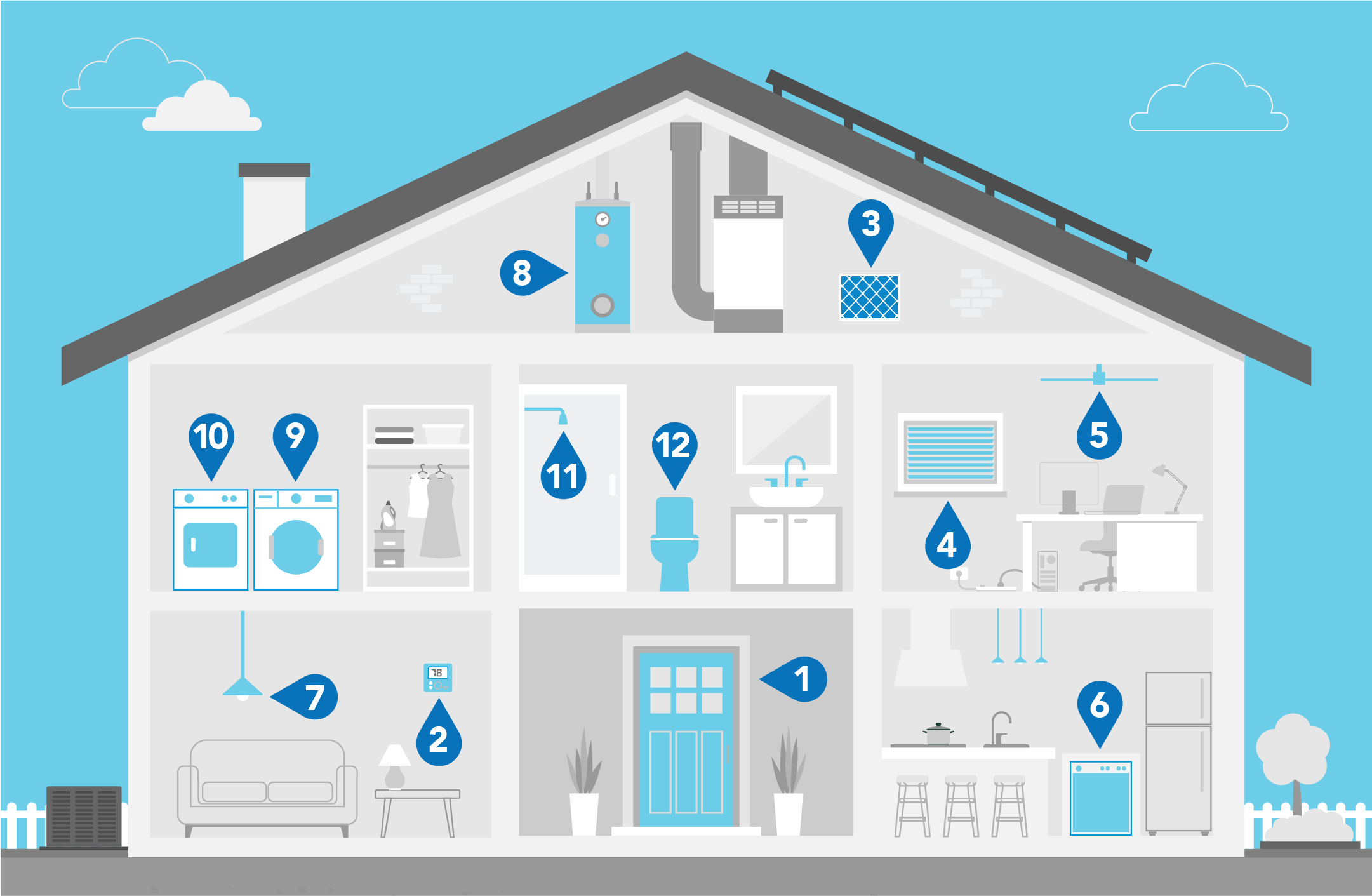Energy Saving Tips

![]() WINDOWS AND DOORS: Seal cracks in your windows, doors and ducts with caulk and weatherstripping to keep cool or warm air inside your home.
WINDOWS AND DOORS: Seal cracks in your windows, doors and ducts with caulk and weatherstripping to keep cool or warm air inside your home.
![]() THERMOSTATS: Save up to 10% a year on heating and cooling by turning your thermostat back 7°-10°F from its normal setting for 8 hours a day. Use a programmable thermostat to automatically adjust temperature settings with your daily routine, such as when you’re asleep or away from home.
THERMOSTATS: Save up to 10% a year on heating and cooling by turning your thermostat back 7°-10°F from its normal setting for 8 hours a day. Use a programmable thermostat to automatically adjust temperature settings with your daily routine, such as when you’re asleep or away from home.
![]() AIR FILTER: Clean or replace filters regularly to keep your HVAC system working efficiently.
AIR FILTER: Clean or replace filters regularly to keep your HVAC system working efficiently.
![]() BLINDS: Close the blinds and curtains during summer days to keep heat from the sun out, and open them during winter days to bring the sun’s heat in.
BLINDS: Close the blinds and curtains during summer days to keep heat from the sun out, and open them during winter days to bring the sun’s heat in.
![]() DISHWASHER: Wash full loads in the dishwasher instead of by hand, and let your dishes air dry rather than running a heated dry cycle. This will save water and energy.
DISHWASHER: Wash full loads in the dishwasher instead of by hand, and let your dishes air dry rather than running a heated dry cycle. This will save water and energy.
![]() LIGHTBULBS: Replace incandescent light bulbs with newer LED models. Lighting accounts for about 15% of an average home’s electricity use.
LIGHTBULBS: Replace incandescent light bulbs with newer LED models. Lighting accounts for about 15% of an average home’s electricity use.
![]() WATER HEATER: Set your water heater maximum temperature to 120°F to save on water heating costs.
WATER HEATER: Set your water heater maximum temperature to 120°F to save on water heating costs.
![]() CLOTHES WASHERS: Only run full loads of laundry, or use a load-sensing washer to save water.
CLOTHES WASHERS: Only run full loads of laundry, or use a load-sensing washer to save water.
![]() FAUCETS AND SHOWERHEADS: Install low-flow showerheads and sink faucet aerators to help save water and energy.
FAUCETS AND SHOWERHEADS: Install low-flow showerheads and sink faucet aerators to help save water and energy.
![]() BATHROOM: Check for leaky faucets and toilets, and fix any issues quickly. Even a small leak in your toilet’s flapper can waste hundreds to thousands of gallons of water in a single month.
BATHROOM: Check for leaky faucets and toilets, and fix any issues quickly. Even a small leak in your toilet’s flapper can waste hundreds to thousands of gallons of water in a single month.
Download the Energy Saving Tips PDF
